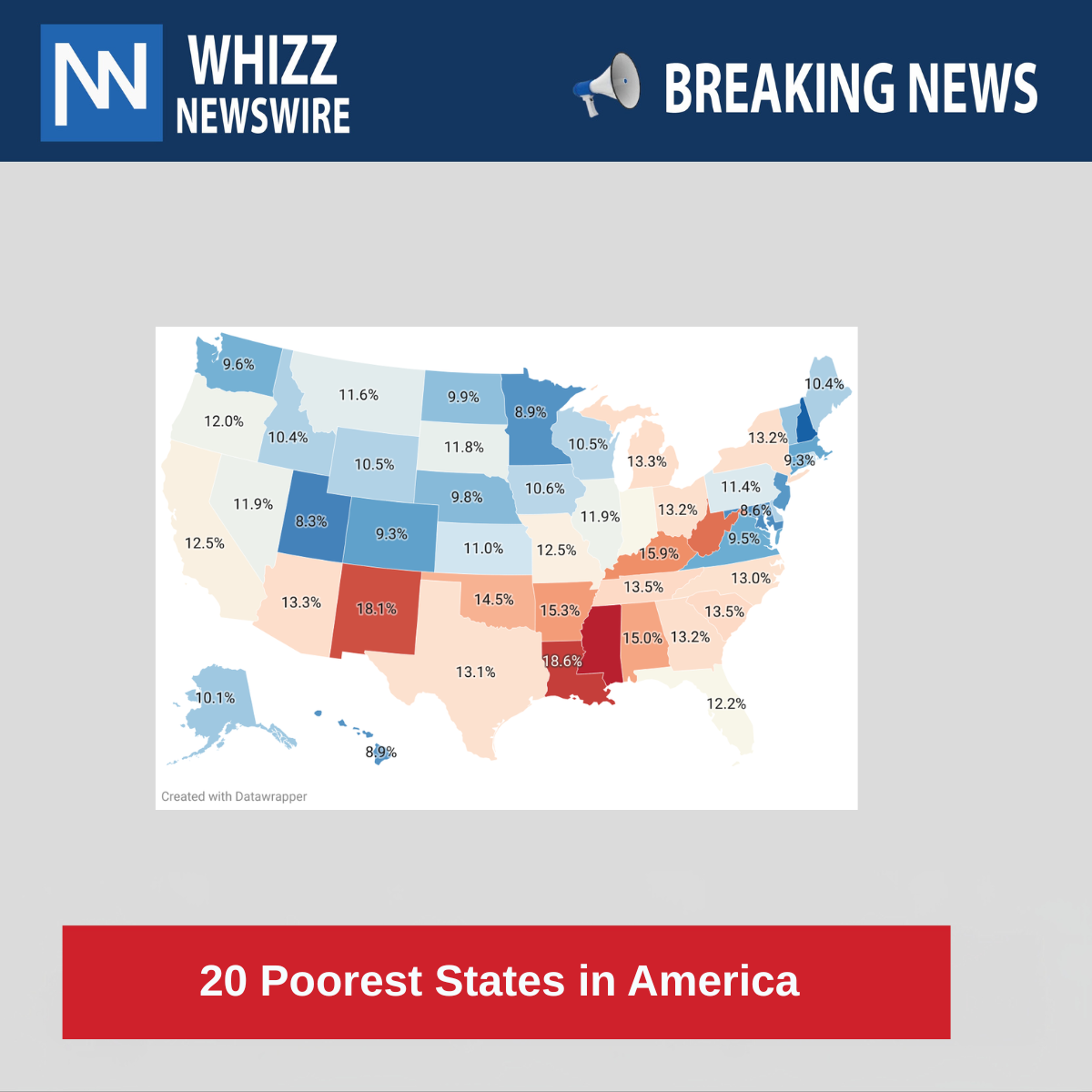The United States is often regarded as one of the most prosperous nations on earth. Yet, beneath its powerful economy and global influence lies a stark reality not every state shares equally in that wealth. In fact, many parts of the country continue to struggle with low household income, high poverty rates, and limited access to quality jobs and education.
In this article, we’ll explore the 20 poorest states in America, not just as a list of numbers, but through a broader understanding of the social, economic, and historical factors that have kept certain regions at the bottom of the income scale.
What Defines “Poorest”?
The most common way to rank the poorest states is by median household income which refers to the amount that divides all households in half, with half earning more and half earning less. This measure gives a more accurate picture of the typical household income compared to average income, which can be skewed by a small number of extremely wealthy residents.
It’s important to remember that poverty is complex. A low median income doesn’t necessarily mean everyone in a state is poor, just as a high median income doesn’t mean everyone is doing well. It’s about trends, access to opportunity, and quality of life on a broad scale.
The 20 Poorest States in the U.S. (2025 Estimates)
Here are the 20 U.S. states with the lowest estimated median household income, ranked from lowest to highest:
| Rank | State | Median Household Income |
| 1 | Mississippi | $49,111 |
| 2 | West Virginia | $50,884 |
| 3 | Arkansas | $52,123 |
| 4 | Louisiana | $53,571 |
| 5 | New Mexico | $54,020 |
| 6 | Alabama | $54,943 |
| 7 | Kentucky | $55,573 |
| 8 | Oklahoma | $55,826 |
| 9 | South Carolina | $58,234 |
| 10 | Tennessee | $58,516 |
| 11 | North Carolina | $60,516 |
| 12 | Montana | $60,560 |
| 13 | Missouri | $61,043 |
| 14 | Florida | $61,777 |
| 15 | Indiana | $61,944 |
| 16 | Ohio | $61,938 |
| 17 | Michigan | $63,202 |
| 18 | Maine | $63,182 |
| 19 | Kansas | $64,521 |
| 20 | Wyoming | $68,002 |
For context, the national median household income in the U.S. is currently around $74,580. As you can see, these 20 states fall significantly below that benchmark.
Why Are These States Lagging Behind?
There’s no single reason why certain states have lower incomes instead, it’s a combination of factors that often overlap and reinforce each other.
1. Historical Disadvantage
States in the Deep South, such as Mississippi, Louisiana, and Alabama, have long histories of economic and racial inequality, underinvestment in infrastructure, and educational disparities. These historic issues still echo in the form of lower wages and fewer opportunities.
2. Rural vs. Urban Divide
Many of the poorest states are predominantly rural, where industries like farming, mining, and manufacturing dominate sectors that traditionally offer lower wages and fewer benefits than urban industries like tech or finance.
3. Educational Attainment
Education plays a critical role in earning potential. States at the bottom of the income list often have lower high school graduation and college attendance rates, which limits access to higher-paying, skilled jobs.
4. Healthcare Access
Healthcare is not just about health it affects economic well-being too. Without access to affordable healthcare, many people miss work or go into debt paying medical bills, further deepening poverty.
5. Job Market Limitations
In many of these states, job creation hasn’t kept up with the population. Or, the jobs that do exist pay below national averages, often in sectors like retail, food service, or agriculture.
Regional Patterns: What the List Tells Us
- The South Dominates the Bottom 10
States like Mississippi, Arkansas, Alabama, and Louisiana appear year after year among the lowest in income. Despite rich cultural history and natural resources, economic development hasn’t reached many rural and working-class communities. - Appalachia’s Struggles
West Virginia and Kentucky are part of the Appalachian region, where a history of coal mining and geographic isolation have left communities behind in the modern economy. - Native American and Hispanic Communities in the Southwest
States like New Mexico have significant Native American and Hispanic populations, who are often among the most economically marginalized groups in the U.S. due to historic and ongoing systemic challenges.
It’s Not Just About Money
While income is a useful metric, it’s only one part of a bigger picture. The poorest states often also struggle with:
- Higher child poverty rates
- Lower life expectancy
- Higher food insecurity
- Limited access to transportation
- Underfunded public services
It’s a cycle that can be hard to break because poverty leads to fewer opportunities, which leads to continued poverty. But that doesn’t mean change isn’t possible.
Are Things Improving?
Yes slowly. Some of the poorest states have shown signs of improvement in recent years:
- Tennessee and North Carolina have attracted new tech and manufacturing investments.
- Mississippi and Arkansas are seeing more small business growth in cities like Jackson and Little Rock.
- Federal programs aimed at expanding broadband access and vocational training are starting to reach more rural areas.
But the progress is uneven, and there is still a long way to go to close the income gap between these states and wealthier ones like California, New York, or Massachusetts.
Final Thoughts
The story of the 20 poorest states in America isn’t just about numbers on a chart. It’s about millions of real people, parents working two jobs to make ends meet, students striving for a better future, seniors living on fixed incomes, and communities trying to build something better against the odds.
Understanding income disparity is the first step toward fixing it. Economic inequality doesn’t exist in a vacuum; it reflects the policies we choose, the investments we make, and the values we prioritize.
If we want a stronger, fairer nation, we need to focus on inclusive growth ensuring that no matter where someone lives, they have access to the resources and opportunities they need to thrive.
For similar content visit here




